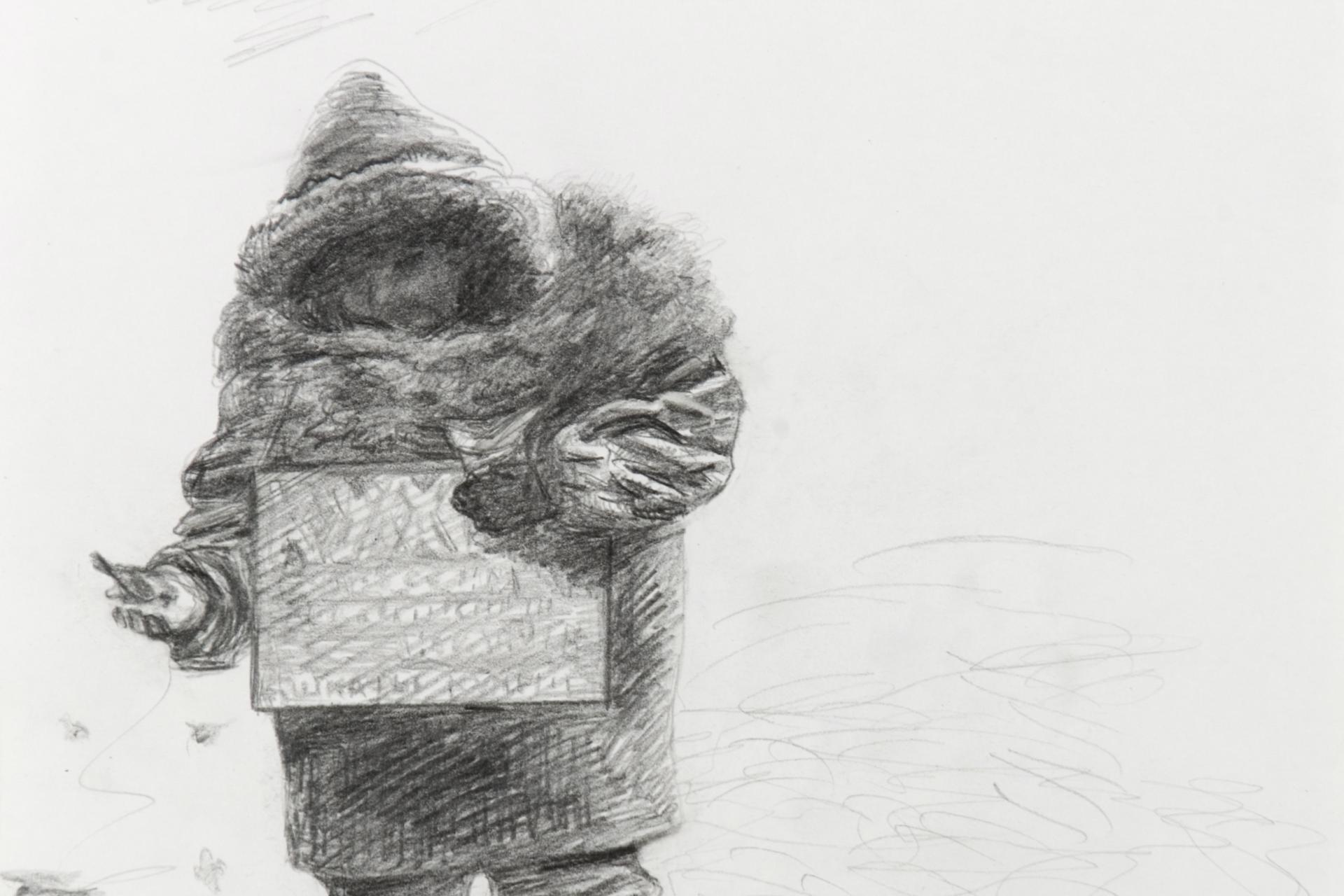
Olga Chernysheva’s personal exhibition that opens at Stella Art’s exhibition site at Mytnaya street represents the Moscow version of the project that was first displayed by the Foundaion last autumn at the State Russian Museum in St. Petersburg (November 15 — December 6, 2004). This version comprises video films Anonymous (in 2 parts) and Steamboat Dyonysios (the exhibition at the State Russian Museum also featured the Train and the Seven Exercises), as well as drawings and watercolors based on video and photographic images created by the artist in 2003-2004.
Olga Chernysheva’s protagonists are anonymous “people from the crowd”, men and women whose voices and faces are too readily effaced from memory, those very faces that were referred to in the idiom of the old realistic art by the all-encompassing expression “folk types”. They are always next to us, and yet, at the same time, they exist outside the space of history, fashion and actuality. They live, absorbed in their everyday, unremarkable pursuits: they move along the street, expose their bodies to the sun, collect utility waste in parks, take rides on motor ships or earn their daily bread by reciting Pushkin in suburban trains.
As Boris Groys observes in his essay written for the exhibition catalogue, Olga Chernysheva shoots her characters “in an emphatically neutral, objective, documentary manner.” So documentary that it may even seem at first sight that the artist’s works would be better suited for the television. And yet, "the present-day media are exclusively preoccupied with things that are new, that distinguish themselves from the realm of triviality. Olga Chernysheva’s works, on the contrary, deal with characters living in the realm of triviality and will therefore never turn up in the TV news.“Indeed, the artist’s films, just as the lives of her characters, are much too slow for the television. Demonstration in the manner of a video installation — loopbacked, without any beginning or end — is much more appropriate for this sort of video art, especially as the viewer can see next to the screen some separate frames, like images that have “fallen out”, as it were, from the video sequence, reproduced by the author’s hand as static, graphical images.
Chernysheva’s act of slowing and complete stoppage of the movement symbolizes a glimpse of some paradisaic spaces, or, at least, “a zone of happiness”, which accidentally opens up in the muddy and impetuous flux of the routine. In effect, this act is nothing but a quest for inconspicuous miracle, for granting of a gift of voice and individual appearance to the anonymous, rejection of the social engagement. These are the features that put Olga Chernysheva’s characteristic manner apart from both the Russian tradition of populism and the impersonal documentary style of the media industry, giving it another, albeit not too precise, address: contemporary art.
Vladimir Levashov
The Foundation has published an illustrated catalogue of the exhibition with essays by Boris Groys, Ekaterina Andreeva and Alexander Ivanov.